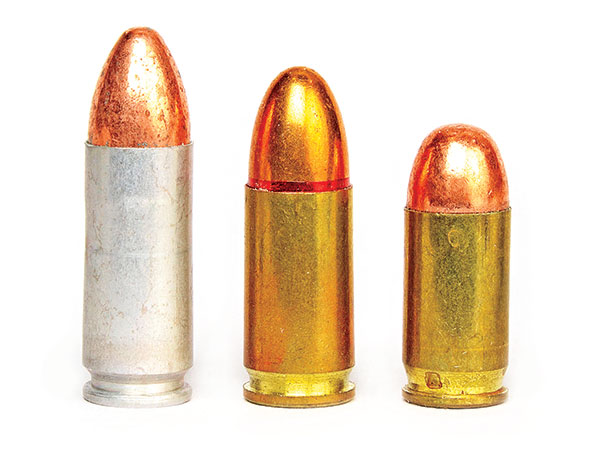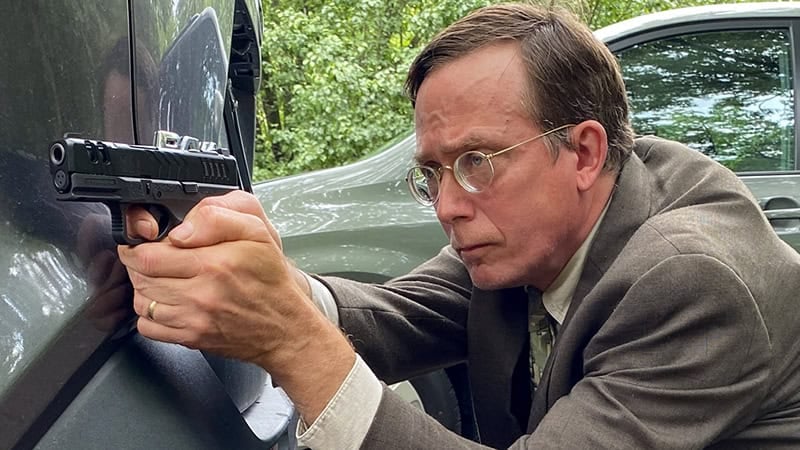The Odd Couple
One perk of being a gun’riter is there’s a never-ending array of things to write about. While many choose to be on the “cutting edge,” I look backwards. That’s exactly what I did last winter at two Montana gun shows. By happenstance I encountered two vastly different handguns. Neither were models I had ever laid a hand on previously and both date from the early 1900’s. I was intrigued.
The first one’s a dainty little thing. It’s a Smith & Wesson Hand Ejector: Model of 1903 according to Roy G. Jinks’ History of Smith & Wesson. According to the book, the gun is known to collectors as the “First Change” because its serial number puts it under 51,126. Chambering is .32 S&W Long. These tiny revolvers were based on an I-Frame, manufactured until 1960, with some time out for World War II. They were made to the tune of more than 700,000.
Think about it for a moment. More than 700,000 translates to twice as many I-Frame .32’s being made than all Colt SAA’s in all calibers up to 1941. The SAA is famous worldwide and yet I’d never held an S&W I-Frame .32 until then.
Anyway, S&W offered several options with them. Full blue or full nickel-plate; fixed or target sights; and barrel lengths of 31/4″, 41/4″ or 6″. My find had the latter. While grips were supposed to be black hard rubber with the S&W monogram, the one I bought was fitted with later J-Frame wood grips. The little thing is so beautifully made I considered hunting down a proper set of grips but it’s also so tiny my big paws can hardly hold it.
This said I have shot it a bit — mostly at chunks of firewood out in the yard, but a 98-gr. bullet at about 700 fps just doesn’t have what it takes to knock ’em over. It’s hard to believe police departments ever issued such things.
Surprisingly High Quality
Magazine capacity of the Spaniard is eight rounds. Sights are a notched rear and small blade front integral with the slide. They are actually more visible than my military 1911/1911A1’s, but certainly don’t lend themselves to any sort of sighting-in. Grips are checkered wood and the safety is a striated lever just above the left grip panel. Also incorporated into the design is a grip safety. Generally speaking, while vintage Spanish handguns don’t have great reputations this Astra’s manufacturing quality is quite good. In my opinion some American makers could take lessons from it. Yep, you read that right.
A box of CCI-Blazer labeled 9mm Largo came with the pistol. I shot only a few and the Astra functioned perfectly. Then I fired some standard 9mm Parabellums and, to my surprise, they functioned perfectly.
I must admit, I found both handguns to be interesting, fun to learn about and to shoot. However, I’m probably going to put them both back on the block here in the near future. How else will I fund my gun show habit and find the next oddity to try out?
A 9mm What?
My second gun show find wasn’t so odd 50 years ago. Back in the ’60’s I saw them advertised in gun magazines at ridiculously low prices. Now Astra Model 400’s — also known as Model 1921’s — are not common. These were made by Unceta y Compania of Guernica, Spain. The caliber is stamped Pistola de 9m/m (38). According to the Standard Catalog of Military Firearms by Ned Swing, this particular Astra is chambered for the 9x23mm, aka 9mm Bergmann, aka 9mm Bergmann-Bayard, aka 9mm Largo. Military Small Arms of the 20th Century, 7th Edition by Ian Hogg and John Weeks states the Model 400 will also accept 9mm Steyr, 9mm Parabellum, 9mm Browning Long, 9mm Glisenti and .38 Colt Auto — although the authors do caution reliability might be suspect with some of the variations.
Also relatively unusual is the fact the mode of function is blowback, like what’s used with .22 rimfire autoloaders and submachine guns. Being a centerfire autoloading pistol, this necessitates a stiff recoil spring. This in turn makes the slide more difficult to pull back than most 9mm pistols. To address this, prominent grasping handles are machined as part of the slide.






